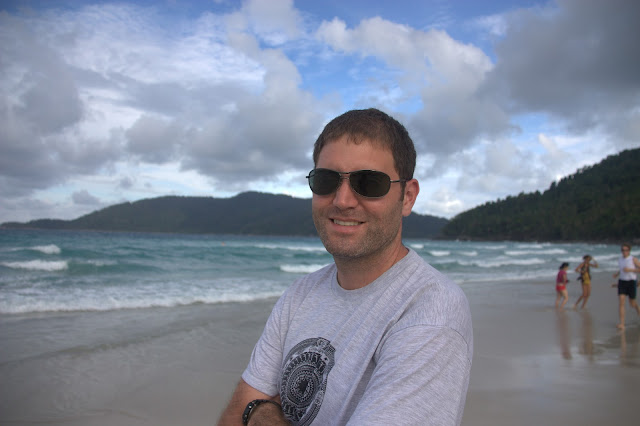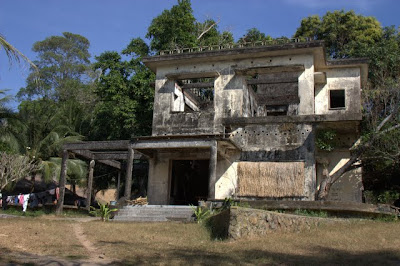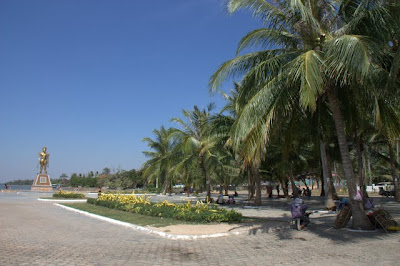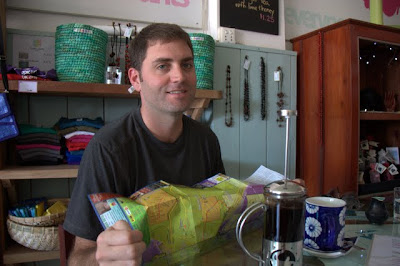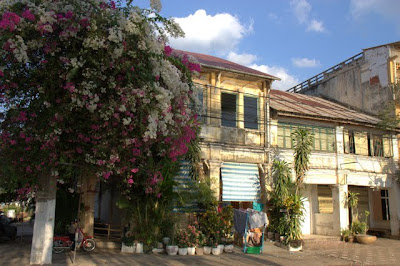Random Lessons from a Year Abroad
So. Exactly one year ago today, we left our hometown and set off on the biggest journey of our lives.
A year is a long time; it is certainly the longest I’ve ever been away from home. I still remember arriving in Barcelona, being amazed by things that we wouldn’t bat an eye at now. Like unrefrigerated eggs. That really blew my mind.
Besides learning that eggs can sit on a counter, there are so many other lessons I’ve learned this year. Many of them are trivial. Others are more deep. I’m still processing so much of what we take in on a daily basis. I suspect it will be a long time before I really understand the impact of this whole undertaking. Because right now? It’s just my life and I’m just living it day by day. But in honor of our one year travel anniversary, I thought I’d record some of my random thoughts about this past year.
1. Might as well start with a big one: traveling the world won’t radically change who you are. I’m definitely a forward thinker, which is a nice way of saying I worry too much about the future. I don’t really dwell on the past – what’s done is done – but I find I have trouble focusing on the present moment because I’m always dwelling on – or worrying about – things down the line. A professor brought this bad habit to my attention in the margin of a mandatory journal we had to keep in college. I think I was blabbering away about how I couldn’t wait for the weekend or the holidays to see a certain someone back home in Pittsburgh. At the time, I bristled; I just miss my boyfriend, I had thought. 13 years later, I’ve realized why I got so bothered by what she said: because it’s true. I’m trying to be more Buddhist zen about things, and I genuinely am enjoying our journey, but I can’t stop thoughts about our next destination or home or our next steps from popping in.
2. On a related note: maybe my job wasn’t the sole cause of my stress; maybe it was me. With a job that often required long days, late nights, and weekends (or worrying about not meeting billable hours when it didn’t); being at the beck and call of clients and partners; always dealing with imagining worst case scenarios and putting out fires; and meeting constant deadlines compounded by other new deadlines, it’s no wonder why I was a ball of stress all of the time. I thought I would instantly unwind on my last day of work and keep unwinding until I was a content piece of string relaxing in the breeze. But instead, I found new things to stress about. And long term travel can give you lots of ammo, if you let it: travel connections to meet, accommodation to find, confusing cultural interactions, language barriers, constant navigation, different safety and cleanliness standards. Sometimes even just finding something to eat can drive you berserk. I wish I could say I am a carefree hippie, happy as a lark, without a care in the world. But the truth is, I’m still the type A personality with a penchant for over-dramatization.
3. Despite not eliminating all my imperfections (typical that I would have thought that was possible), this past year has given me the gift of perspective. Perspective that even though I may not be new and improved the instant I left home, that I am learning more about who I am as a person and who I want to be as a person. More about my relationship with Sean, when we only have each other to rely on each day. More about what I want out of life. More about what others go through to live each day.
4. While there are people in the world who want to take advantage of you, many people are genuinely kind. If I ever encounter a confused visitor when I get home, I will stop, give directions, answer questions, and engage them in conversation. I swear.
5. Not everyone is trying to take advantage of you. Sometimes it’s just a language or cultural confusion. And most people in the world who pester you to buy something are just trying to make a living. Smiling and joking with them goes a long way.
6. If your laptop ever becomes overrun with tiny ants on a tropical island, and you don’t have access to any compressed air cans, it is possible to get rid of them in a three step process: (1) heating your computer up by leaving it on in a corner of your room, (2) killing as many of them as you can while wailing how they just keep coming, and (3) suffocating the rest by putting your computer in a plastic bag. Who knew? (Let’s not discuss how there are probably a million tiny ant carcesses in the body of our computer, because we also don’t have access to the tools to get rid of them).
7. Unless you miraculously come across a store that refrigerates chocolate in tropical areas, it is not worth it to buy it. It never tastes the same. Unless it is the international recipe KitKats.
8. Similarly, chocolate cakes, even ones temptingly described as “American moist chocolate cake,” are never, ever moist.
9. My standards could go so low that getting any of the following is considering a bonus and getting all of them is a luxury hotel: toilet paper, hand soap, towels, a top sheet, a window, or a hot shower.
10. Wearing the same clothes over and over and over again really isn’t as bad as you think it would be and really only occurs to you when you look at pictures from a year ago and laugh because you are wearing the same outfit you currently have on. Or six months ago. Or yesterday.
11. If we ever need to lose weight in the future, screw diet and exercise. We’ll just travel around the world again. We’ve both lost over 15 pounds. I credit smaller portion sizes and not sitting at a desk all day, because even though I know 7 and 8 are correct, that doesn’t mean I listen to myself.
12. Even my pasty pale self can turn honest to goodness tan after spending five months in the tropics.
13. It took me 6 months to ween myself off of make-up and hair products. Now, the most important part of my regimen is deodorant, face lotion with SPF, and mosquito repellent.
14. The couch is a very important piece of furniture and its importance should not be underestimated. Couch, I miss you.
15. Children in the world are all the same; they just want to have fun. I declare each country’s children to be cuter than the last, which means New Zealand’s children will win by default. It won’t be right away (sorry, Mom) but I’m finally ready as I’ll ever be to have children. Probably because I realized that people, including us, who said now was the best time in our lives to travel were wrong. If you want to travel, children shouldn’t stop you .
16. No matter how tempting, Mexican food in Europe, Asia and Africa is just a waste of money.
17. The transnational fast food theorem is real. We never, ever eat at these places at home, but we’ve succumbed to McDonalds, Pizza Hut, KFC (but why no cornbread abroad? why?) Kenny Rogers Roasters, Subway, Dunking Doughnuts, Cold Stone Creamery (okay, maybe we eat there at home), and Starbucks (okay, there too).
18. All I had to do to lose my seasonal allergies is to leave my hometown.
19. Imported fruit at home will never hold a candle to fruit in their native environments. Sadly, I think this means bananas are ruined forever.
20. The danger of going to a remote tropical island is that your standards for beaches is set ridiculously high for the future.
21. Once a television junkie, always a television junkie, even if it means watching your favorite shows on a tiny laptop screen.
22. For having unlimited free time in theory, you still can’t accomplish everything you want to.
23. We probably know more pop songs now than we knew at home. But anything else? If no one mentions it on Facebook, I don’t know about it. (Facebook is how I learn important news. Like how Shaler got a fancy new Giant Eagle).
24. If you only know one language in the world, English is the one to know. But it is entirely possible to communicate in smiles if neither one of you speak each other’s language.
25. When they say it is not a matter of if you get sick, it is when you get sick, they mean it. And being sick on the road sucks.
26. The United States is only one country out of many and it is not the center of the world.
27. Yet, American music and movies are played around the world, international news channels are incapable of running an international news story without mentioning the United States’ take on the matter, and many people worldwide probably know more about the U.S. than we do.
28. Sean is best at navigating. I am best at spotting signs and landmarks. Nevertheless, judging by my refusal to eat bugs at a Thai market and my poor navigational skills, I would be the weak link on any hypothetical Amazing Race team.
29. In a showdown between the Ipod Touch and the Kindle as handiest travel gadget, I’m not sure who would win.
30. A big reason I never really traveled internationally before this trip was because I didn’t know how cheap it can be. I know now that the most expensive part of international travel is getting there.
31. But while I’ve learned I can travel dirt cheap, I don’t really have any desire to do so in the future. While I won’t require luxuries, I’m much happier when we spend a little more.
32. It really is possible to walk into a pharmacy, describe your problem, and get drugs you would need a prescription for in the United States.
33. Traveling around the world, only knowing English, sometimes without a plan, is not as hard as you think its going to be before you leave.
34. The more effort it takes to get somewhere, the more rewarding the destination usually is.
35. A year is not long enough to see the whole world. Traveling for a year doesn’t quench your thirst, it only makes you thirstier. One or two week vacations are not going to cut it in the future. Considering we can while away a whole week in one place without blinking an eye, I don’t think we will ever travel the same again.
36. Just because villages do not having running water, 24 hour electricity, or paved roads does not mean the villagers won’t have cell phones and satellite televisions.
37. We still think like Americans. Just the other day, we wondered whether we were allowed to stand in a certain area to watch a sunset. We were in Malaysia. Who was going to stop us?
38. Call it global warming, climate change, whatever, but we’ve seen firsthand weather happening all over the world that is not supposed to happen.
39. Usually observing everyday life somewhere else is much more interesting than sightseeing. We still feel compelled to see the big sights. But we really don’t care about seeing everything anymore.
40. As an American, travel is a right and a privilege. Our ability to move about the world is virtually unfettered and something not to be taken for granted, as I learned from the Moroccan fishmonger who couldn’t visit his sister in Europe, the South African van driver who dreams of visiting the United States someday, the Indian boy who asked Sean to pick him up from the airport when he eventually gets to America, the Turkish scuba instructor who has to fill out mountains of paperwork to enter anywhere but Asia, and the Pakistani man in front of us in line at Thai immigrations who couldn’t waltz right in like we could and did.
And, finally,
41. If you are unhappy about your life, only you can change it.
Happy Birthday to Sean
Somebody turns 35 today…five years wiser than thirty, but also closer to forty. As far as birthdays go, this one shouldn’t be too shabby. I mean, see above. We’re in the Perhentian Islands. Let’s hope those dark clouds that have been persistently following us since we crossed the border into Malaysia go away. If not, we’ll be under water – we start our advanced scuba diving course today.
Happy birthday, Sean – even though our bickering has reached an all time high after nearly a year on the road, I love you more than ever and there’s no one I’d rather travel with than you. Next year, South America, perhaps?
An Afternoon by the Sea in Kep
I was going to lump Kep in with Kampot, but we adored Kep just as much so I thought it rightfully deserved its own post. Kep is only 15 miles away from Kampot and unlike Kampot, actually sits right on the sea. We set off under sunny skies on our favorite Asian transport – our own two wheels – and headed down a paved road past cows, green fields, and mountains. We knew we arrived when we could smell the sea in the air. After a scoot around town and some time lounging on the seaside promenade watching the locals swim in the sea, we concluded that it doesn’t get much sleepier than Kep. It’s the type of place that makes you want to sit still, to slow time down and linger.
So we did. Kep has a collection of seaside cafes all serving one thing: crabs caught by local fisherwomen in the waters right out front. We found one with cushy seats by the water and plopped ourselves down for a leisurely lunch. While waiting for our crabs, we watched women in floppy hats wade out into the waters in front of us and trap more of the day’s catch. Before we left, Sean never ate seafood. But it is hard to resist seafood as fresh as this, and somewhere between the red snapper in Essaouira and the tiger prawns in Fort Cochin, he’s become a convert. When the crabs arrive, we devour them. They’re fried whole with fresh green peppercorns from Kampot, and dressed with a black Kampot pepper and lime marinade. I think it goes without saying that they are sublime.
There was talk of staying for sunset and having more crabs for dinner. There was more talk of spending the next night in Kep. In the end, we did neither and left Kep behind in its sleepy solitude.
I don’t think Kep will stay this way. As Cambodia distances itself from its turbulent past, somebody’s going to want to come in and make money from Kep’s seaside location. As it stands now, though, Kep is quiet. Unlike so many other places in Southeast Asia, you can hear yourself think there. The main sound in Kep is simply the waves rolling into shore. The quietness is peaceful, but there’s sad undertones. Back in its heyday, Kep was the coastal stomping grounds of French colonists and Cambodian elites. The grand mansions and villas that are left are mostly charred shells. Some say the Khmer Rouge burned them down as part of their genocidal crusade and particular hatred of the elite. Others say it wasn’t the Khmer Rouge directly, that the locals looted the mansions and villas to survive. Either way, it seems odd that there’s hardly anyone around to appreciate Kep’s beauty. I’d like to keep Kep for myself, but I know sometimes it’s better for places to move on.
For the Love of Kampot
Sometimes, on your journeys, you encounter places that make you feel warm and fuzzy, that make you smile, that linger in your memories. You’re not really sure why; they’re just ordinary towns with ordinary people. Often there’s nothing to DO there. But you never feel bored when you’re there, you just feel content.
For us, Kampot, a little town on the river on the southern coast of Cambodia, is one of those places. I’ve found that it’s usually the cumulative effect of little things that make a place stand out: Crumbling French architecture. Little boutiques. A do-good cafe with chocolate chip cookies, French press coffee and French toast with sweet bananas and wild honey. Sunsets over the river. Strolls down a riverside arcade. People living their lives and minding their own business. A new obsession with pungent local pepper. A real, actual salad with real, actual bacon. A random NFL towel hanging on a fence. Road trips on a scooter. Flowering trees. Chickens strapped to every surface of a minivan. Absolute, pure squeals of joy and delight from little kids hamming it up for pictures again and again and again until your memory card is almost full.
It’s hard to predict when a town will capture your heart, but sometimes it just does.
Battambang: A Photo Essay
Since I just discovered how to make fancy black borders in WordPress, let’s get all fancy and call this a photo essay. Oooh.
Our time in Battambang was brief, but we fit in an awesome cooking class and an extensive tour of the surrounding countryside. Either one was worth the detour to Battambang alone.
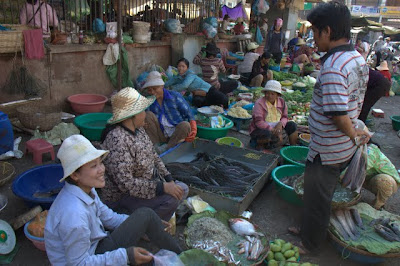
Our first priority in Battambang was signing up for that evening's cooking class at the Smokin' Pot. I learned about the class over at Lives of Wander; Theresa's right, it is one of the best deals in Asia and I'm happy to report it is still only $8 for a hands on, three dish class with a trip to the market. And unlike our trip to the market during our Thai cooking class, we actually purchased the meat and produce we'd be using in our meals.

Which means the fish swimming around in buckets became the fish for our fish amok after this lady chopped off its head.

Carrying the kaffir lime leaves and still warm chicken meat. Thank goodness our classmates voted for breast.

Like Thai cooking, Cambodian meals often start with a paste of spices and herbs ground by a morter and pestle. We used half this paste in our fish amok and the other for the spicy beef stir-fry.

Sean is turning into quite the master chef during our Asian travels. In the pan, the coconut milk, curry paste, and fish simmer for the fish amok.

When the cooking instructor said spicy beef, he meant SPICY beef. This was easily the most spicy dish we had during our six months in Asia, requiring lots of rice and water to get it down. And it only had two or three chilies, plus the ones in the paste. Our instructor told us when he makes this dish at home, each family members customizes the dish to their liking. He takes 7 chillies, his wife takes 10, and his mother in law takes a whopping 13. Spicy!

The next morning, we set off on a tour of the countryside by tuk tuk, with Philay as our guide. We didn't so much meet Philay as Philay met us, being the most patient and persistent of the horde of tuk tuk drivers that swarmed us as we got off the bus in Battambang. Tuk-tuking tourists is big business in Battambang, particularly because there are a lot more tuk tuk drivers than there are tourists, and countryside tours are the biggest score of all.

Our first stop of the morning was to a local market, where we were the only non-Cambodians in sight. You might think we would get sick of markets but you would be wrong. Asian markets never disappoint; there's always something to watch, something more colorful and outrageous than the previous market. For example, the mouse transaction above. Yes, mice.

And you can't leave without a chili chopper, at least Philay didn't think so. After passing by the live chili chopping in action, the Cambodian version of an infomercial, Philay decided his wife would really like a chili chopper too.

After the market, we stopped by a former Pepsi plant. According to our guidebook, Pepsi abandoned the plant in the 70s when the Khmer Rouge rolled in. According to Philay, the plant was still in operation until the Vietnamese took over in the 80s. Either way, it stands as it did decades ago, with glass bottles collecting dust on the inside.

When going over the day's itinerary, Philay kept asking us if we wanted to see a coke-a-die farm. A coconut farm? we said. Yes, a coke-a-die farm, he repeated. Okay, we said. We like coconuts. When we arrived, Philay paid the attendant some riel and took us over to this water pit. Oh, we both said in unison. A crocodile farm! Yes, Philay said. Like I said, a coke-a-die farm.

When the government neglected public transport for the locals, the locals came up with their own method of transport: a bamboo train. The "train" is nothing more than a slab of bamboo strips set on top of wheels, running in between the real trains. Today, I'm pretty sure it exists pretty much as a tourist trap, but we allowed ourselves to fall into the trap and off we went.
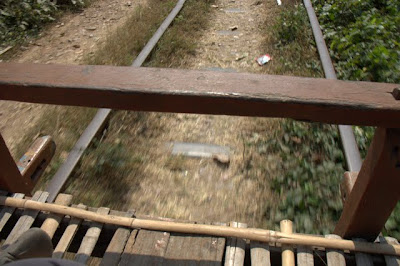
...making hurtling forward on the tracks on the unattached bamboo an interesting ride to say the least.

And oh yeah, if someone is coming in the opposite direction? One of the bamboo trains has to move. We got the boot.
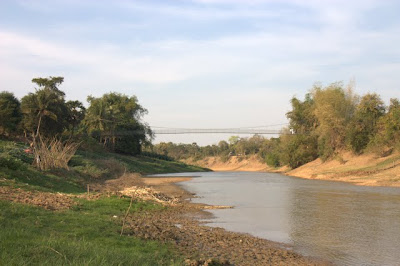
Next, we head to the riverfront, just as kids are on their way home from school and farmers finish their tasks in the late day sun.
We also do our good deed for the day; Philay stops to smoke some bats out of a tree next to a temple.

Philay seems very excited about our last stop - watching the sun set over a lotus farm - but we're a little rattled when we get there. Minutes before, on the big highway, we stopped at an accident scene that had happened right before we arrived. A man lays completely still on the side of the road. Philay learns a car ran him off his motorbike and he wasn't wearing a helmet. The lone Westerner at the scene is frantic. I can't get through to the police, he shouted, and half of this guy's head is gone! Philay agrees to drive to the police station to notify them. We start to take off when we hear sirens. Philay drives away without giving the accident a second thought. We, on the other hand, keep peppering him with questions. Cambodia has one of the highest traffic accident rates in the world; scenes like this are all too common. Unfortunately, because many people fail to wear their helmets, so are fatalities. Fines for driving without a helmet means you'll often see the male driver with a helmet, with female and child companions go without.

Philay was pleased when the lotus farm is teeming with bridal parties taking pictures. He'd been promising us weddings all day; we were never quite sure whether we were actually going to a wedding or just observing one. We're pleased we don't have to crash a wedding in our travel clothes. I pull myself together to resume my role as paparazzi. We learn Cambodian brides like big hair and big make-up on their wedding days, wear big colorful dresses that are the same color as the less ornate dresses worn by the bridesmaids, and decorate the cars in the same way Americans do.

